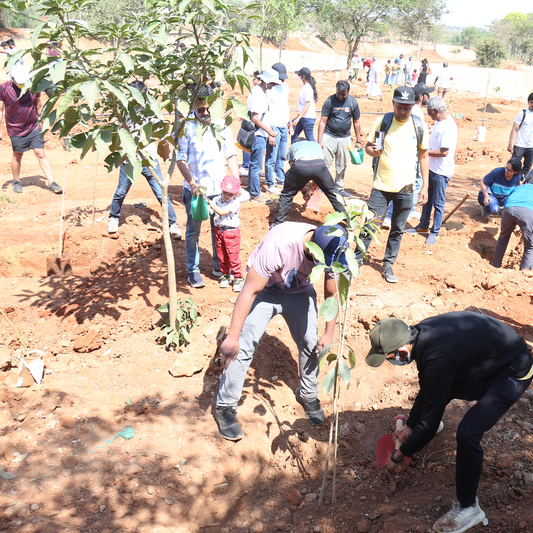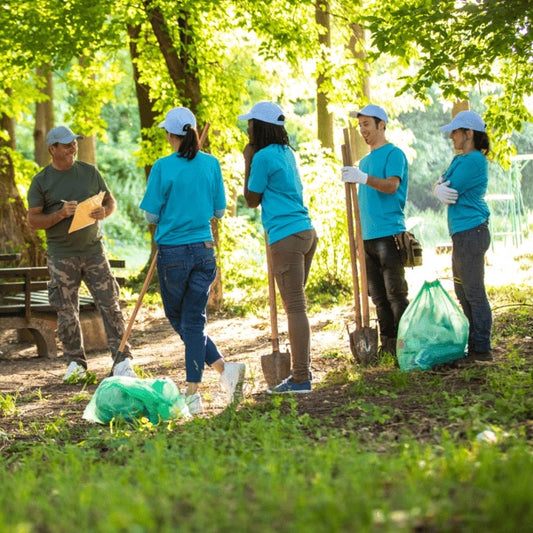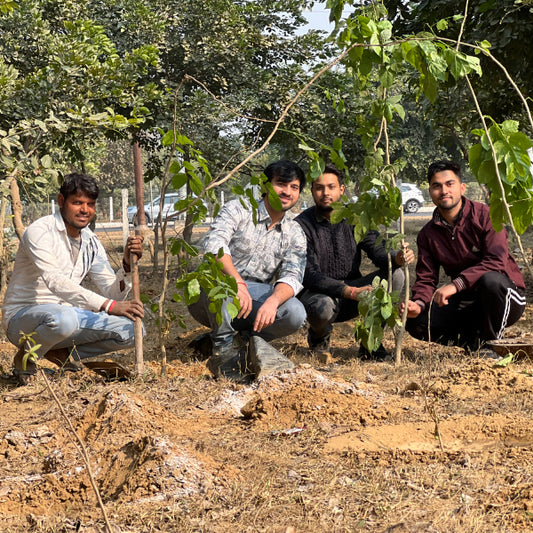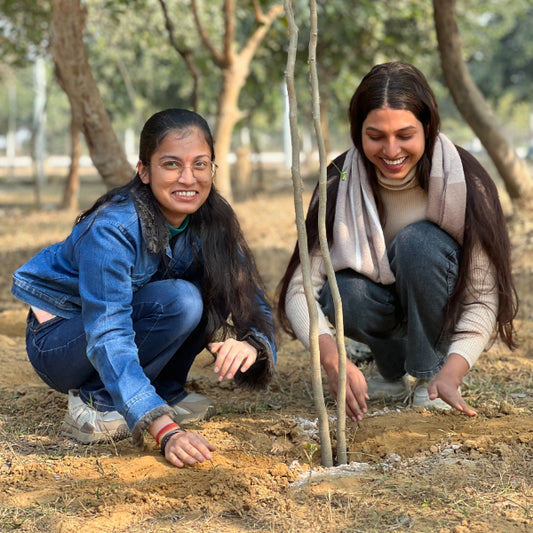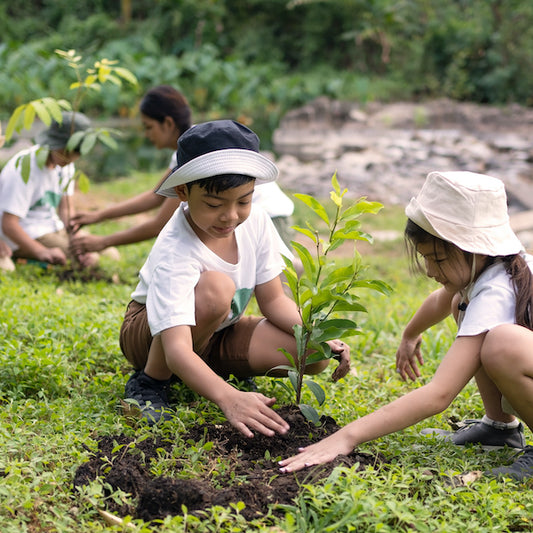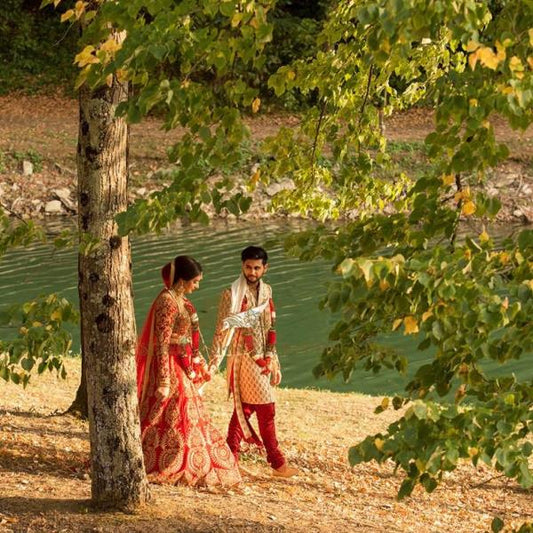Beyond Today: Garg & Swarnakar Family’s Gift to Nature
The Garg & Swarnakar Family has embarked on a heartfelt tree plantation initiative rooted in the agroforest concept. This meaningful endeavor refl Read more
Plantation Site Gallery
Project Update 1
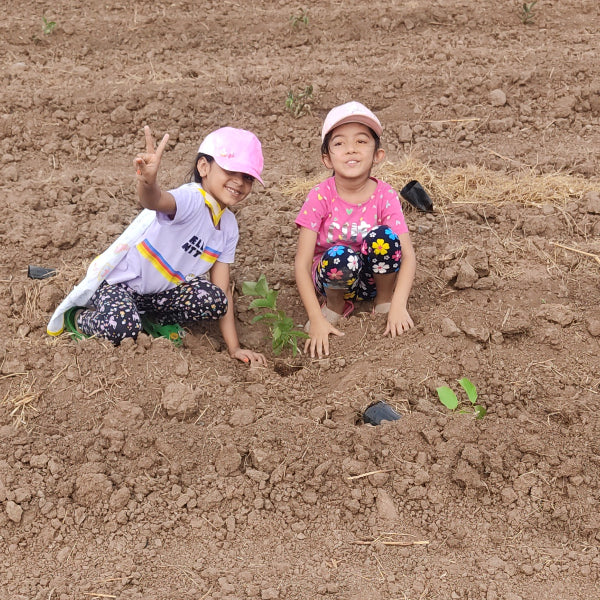
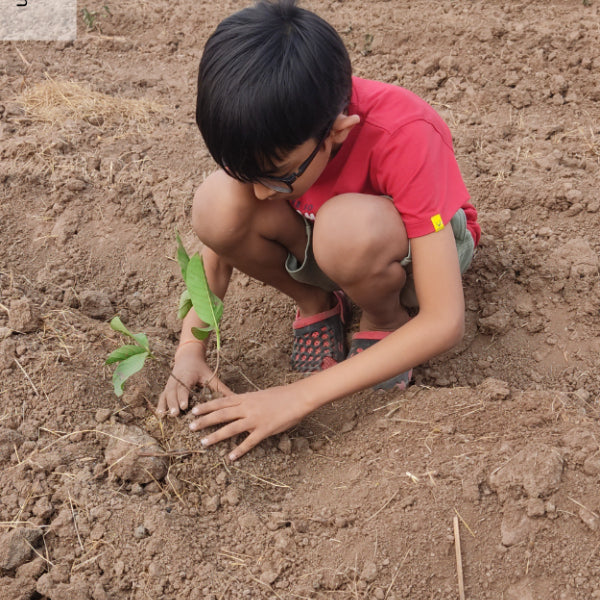
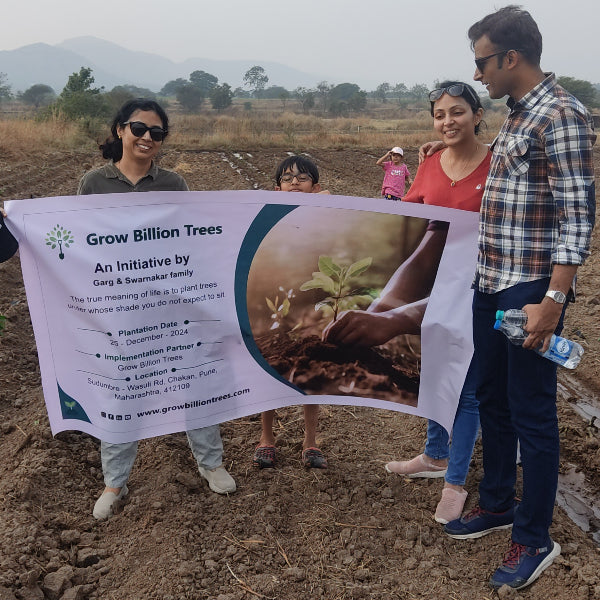
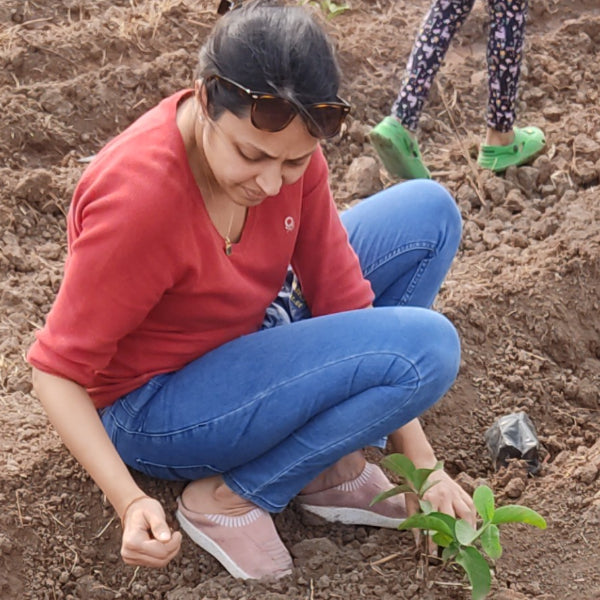
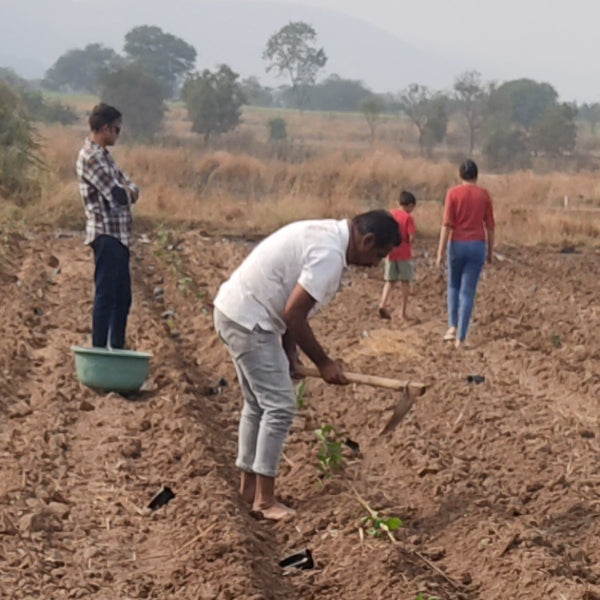
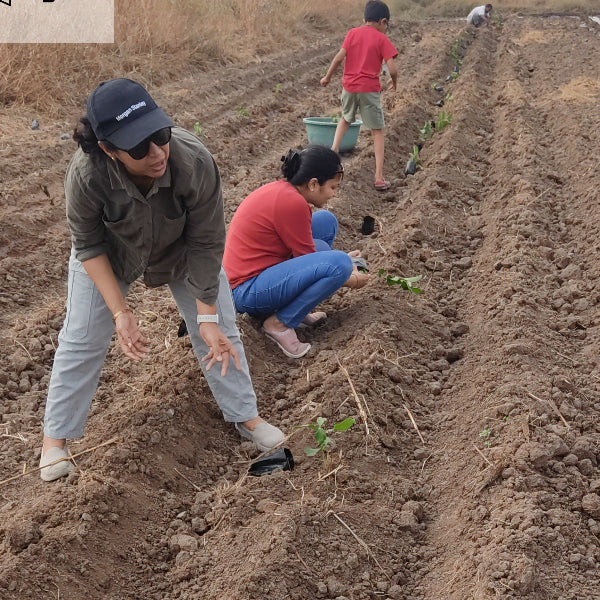
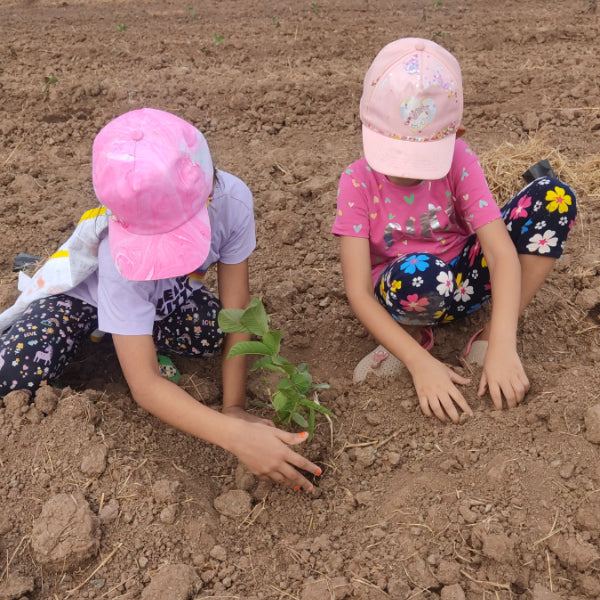
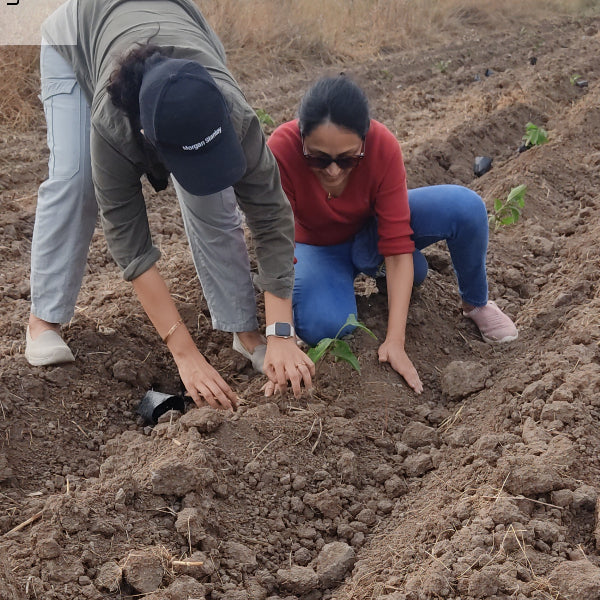
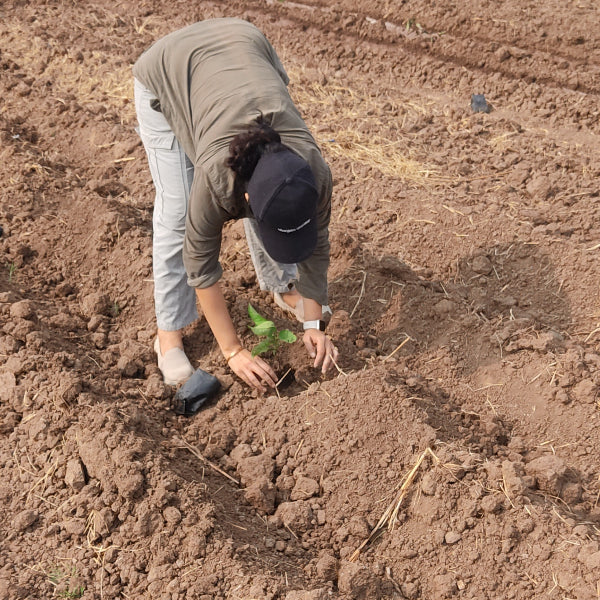
Digital Forest
Forest with 50 Trees planted
Beyond Today: Garg & Swarnakar Family’s Gift to Nature
The Garg & Swarnakar Family has embarked on a heartfelt tree plantation initiative rooted in the agroforest concept. This meaningful endeavor reflects the family’s collective desire to give back to Mother Nature, ensuring that future generations inherit a greener and healthier planet.
Driven by the belief that “The true meaning of life is to plant trees under whose shade you do not expect to sit,” this initiative symbolizes selfless love and long-term environmental stewardship. The family aims to cultivate thriving agroforests, blending environmental sustainability with community well-being.
Through this plantation, the Garg & Swarnakar Family not only strengthens their bond with nature but also sets an inspiring example of how small, united actions today can lead to a flourishing tomorrow.
Tree Plantation Date
25th December 2024
Plantation Location
Sudumbre, Wasuli Rd, 412109
Trees Planted
Total Count: 50 Trees
Forest Type: Agroforest
The Garg & Swarnakar Family’s agroforest tree plantation initiative is rooted in empowering farmers and fostering sustainable land use. By integrating tree planting with agricultural practices, the initiative not only enhances soil fertility and biodiversity but also creates long-term economic benefits for local farmers. This farmer-centric approach ensures that communities thrive alongside nature, promoting resilience and environmental stewardship. Driven by the belief that true fulfillment lies in planting trees for future generations, the family’s initiative stands as a testament to giving back to Mother Nature and leaving a lasting legacy of green for years to come.
Advantages Of Agroforestry
Enhanced Income Diversification
Agroforests allow farmers to grow multiple crops alongside trees, creating diverse streams of income. This reduces dependency on a single crop and ensures financial stability even during unpredictable weather or market fluctuations.Improved Livelihood Resilience
By blending agriculture with forestry, farmers gain access to year-round produce, fuel, and fodder. This improves food security and provides materials that can be sold or used, strengthening the resilience of farming families against economic and environmental challenges.Reduced Farming Costs
The integration of trees into farmland naturally enriches soil health, reducing the need for expensive fertilizers and pesticides. Additionally, the shade and organic matter from trees help retain soil moisture, cutting down irrigation costs and preserving water resources.Soil Enrichment and Erosion Control
Agroforestry practices prevent soil degradation by stabilizing land with tree roots, minimizing erosion during heavy rains. The fallen leaves and organic matter improve soil fertility, enhancing crop productivity over time.Increased Biodiversity
Planting a variety of trees and crops encourages a healthy ecosystem, attracting pollinators and beneficial insects that boost yields. This biodiversity supports healthier and more balanced environments, benefiting both farms and surrounding natural habitats.Carbon Sequestration and Climate Mitigation
Agroforests absorb carbon dioxide, helping mitigate climate change by reducing greenhouse gases. The trees also create cooler microclimates, shielding crops from extreme heat and contributing to overall environmental health.Long-Term Land Sustainability
Through agroforestry, degraded lands can be restored to productivity, ensuring that farms remain fertile and viable for future generations. This sustainable land use practice guarantees the preservation of arable land for years to come.
Activities During Tree Plantation
During the Garg & Swarnakar Family’s tree plantation initiative in the agroforest concept, the site was meticulously prepared in advance to ensure smooth planting. On the day of the event, family members, including children, came together to actively participate in the plantation process. With great enthusiasm, they planted saplings, carefully placing them into the prepared soil, and watered each one, symbolizing their collective commitment to nurturing nature. The involvement of children added a sense of joy and learning, fostering a connection with the environment at an early age. This hands-on activity not only strengthened family bonds but also instilled the values of sustainability and environmental responsibility across generations.
Tree Plantation Purpose
SDGs Achieved Through Garg & Swarnakar Family Tree Plantation Initiative in Agroforest Manner
1. SDG 2: Zero Hunger
Agroforestry integrates tree planting with agricultural practices, leading to improved soil fertility and higher crop yields. The diverse planting methods ensure better food security by providing fruits, nuts, and other resources, reducing hunger, and enhancing the nutritional value of farm produce.2. SDG 3: Good Health and Well-being
Agroforests improve air quality, reduce heat, and provide cleaner surroundings, positively impacting the health and well-being of communities. Access to fresh produce from agroforests enhances nutrition and overall health, aligning with SDG 3’s goal of ensuring healthy lives.3. SDG 6: Clean Water and Sanitation
Tree plantations improve water retention in the soil, reducing runoff and enhancing groundwater recharge. This ensures the availability of clean water and helps prevent land degradation, contributing to water conservation and better water quality.4. SDG 8: Decent Work and Economic Growth
The initiative empowers local farmers by diversifying their income sources. Agroforests offer multiple avenues for revenue, such as selling timber, fruits, and medicinal plants. This fosters economic growth, creating sustainable employment and contributing to rural development.5. SDG 11: Sustainable Cities and Communities
By fostering green spaces and promoting sustainable land management, the initiative contributes to creating resilient communities. Agroforests near urban and rural areas improve environmental quality, reduce pollution, and enhance community well-being, supporting sustainable development.6. SDG 12: Responsible Consumption and Production
By promoting sustainable land-use practices, the initiative encourages responsible consumption of natural resources. Agroforests reduce the need for chemical fertilizers and pesticides, supporting eco-friendly farming and ensuring long-term productivity without harming the environment.7. SDG 13: Climate Action
The agroforest initiative directly contributes to climate action by increasing tree cover, which helps sequester carbon dioxide and mitigate the effects of climate change. Trees play a critical role in reducing greenhouse gases, regulating temperatures, and preventing soil erosion, aligning with the global effort to combat climate-related challenges.8. SDG 15: Life on Land
By planting trees in an agroforest model, the initiative promotes biodiversity, restores degraded land, and enhances ecosystems. This supports SDG 15 by fostering healthier forests, improving soil health, and creating habitats for wildlife, thereby contributing to the conservation and sustainable use of terrestrial ecosystems.
ESGs Achieved Through Agroforestry
Environmental (E)
The Garg & Swarnakar Family’s tree plantation initiative plays a vital role in enhancing environmental sustainability. By adopting the agroforest model, the initiative contributes to carbon sequestration, reduces soil erosion, and improves biodiversity. Planting trees alongside agricultural crops enriches soil fertility, restores degraded land, and promotes natural ecosystems. This approach also aids in mitigating climate change by reducing greenhouse gases and fostering resilient landscapes. The family’s commitment to giving back to nature ensures that future generations inherit a greener, healthier environment, aligning with long-term ecological preservation.Social (S)
The initiative fosters community engagement and strengthens social bonds by involving family members, including children, in the plantation activities. By participating in hands-on planting and nurturing saplings, the younger generation learns the value of environmental stewardship. Additionally, the project benefits local farmers by enhancing agricultural productivity, providing diversified income opportunities, and supporting food security. The initiative creates a ripple effect, encouraging others in the community to take similar actions, thus promoting collective responsibility toward nature and fostering a sense of unity and shared purpose.Governance (G)
The partnership between the Garg & Swarnakar Family and Grow Billion Trees has significantly strengthened the governance aspect of their tree plantation initiative in the urban forest concept. Grow Billion Trees provided structured planning, expert guidance, and efficient execution, ensuring that every step of the project adhered to sustainable and ethical practices. This collaboration enabled transparent monitoring of the plantation process, from site preparation to sapling care, fostering accountability and long-term stewardship. By aligning with an experienced organization, the family ensured that their efforts were impactful, scalable, and aligned with broader environmental goals. This partnership reflects a commitment to responsible governance, demonstrating the importance of collaboration and strategic oversight in achieving lasting environmental change.
Commitment by Grow Billion Trees
Grow Billion Trees is committed to driving sustainable plantation efforts, ensuring every initiative aligns with key environmental objectives and promotes long-term ecological balance. They focus on selecting native tree species that are well-adapted to local ecosystems, ensuring a higher survival rate and stronger environmental impact.
To maintain plant health and longevity, Grow Billion Trees emphasizes continuous maintenance and regular monitoring of the plantations. This approach helps ensure that each tree thrives, contributing effectively to both biodiversity and climate resilience.
Transparency is a core principle in their operations. Clients receive comprehensive reports, including geo-tagging of planted trees, survival rate updates, and ongoing progress reports. This level of openness allows clients to track the direct impact of their contributions, reinforcing trust and accountability.
Through their dedication to sustainable practices, Grow Billion Trees ensures that every plantation project leaves a lasting positive footprint on both the environment and the local communities it serves.
Summary
The Garg & Swarnakar Family’s tree plantation initiative in the agroforest format embodies their commitment to giving back to nature and fostering a greener future for generations to come. Rooted in the belief that true fulfillment lies in planting trees for the benefit of others, the initiative blends agriculture with forestry, enhancing soil health, biodiversity, and climate resilience. By involving family members, including children, the project nurtures environmental stewardship and strengthens bonds across generations. This initiative reflects a legacy of sustainability, ensuring that the seeds sown today grow into thriving ecosystems that contribute to a healthier and more sustainable planet for years to come.
Trees for Corporates
Trending
Most Popular
FAQ
What is agroforestry and how can individuals benefit from it?
Agroforestry is the practice of integrating trees with agricultural crops and livestock to create more sustainable land use. Individuals benefit by improving soil fertility, increasing crop yields, and diversifying income sources. Additionally, agroforestry helps reduce environmental impact by sequestering carbon, improving water retention, and providing habitat for wildlife. It's a win-win for both the environment and your farm or backyard.
Why should individuals engage in tree plantation activities?
Engaging in tree plantation allows individuals to directly contribute to the environment. Trees purify the air, reduce carbon emissions, provide shade, and support biodiversity. By planting trees, individuals help combat climate change, restore degraded land, and create a healthier environment for future generations. It’s a meaningful way to leave a lasting, positive impact on the planet.
How does tree plantation improve local communities?
Tree plantation has a range of benefits for local communities. Trees provide food, medicine, and income through timber and non-timber products. They also help improve air quality, reduce heat in urban areas, and contribute to water conservation. Community tree-planting initiatives foster a sense of collaboration, environmental stewardship, and pride among residents, benefiting both the ecosystem and the community’s well-being.
Can individuals create their own agroforest at home?
Yes, individuals can create their own agroforest at home by integrating trees and crops in their gardens or even on rooftops. Agroforestry at home boosts food production, provides shade, and increases biodiversity. Whether you’re planting fruit trees, vegetables, or medicinal plants, you can create a thriving ecosystem that benefits both you and the environment. It’s an easy, eco-friendly way to grow your food sustainably.
What are the environmental benefits of individual tree plantation?
Individual tree plantation brings numerous environmental benefits. Trees absorb carbon dioxide, helping combat climate change. They also filter pollutants, improve air quality, and provide habitats for wildlife. Additionally, trees prevent soil erosion, improve water retention, and reduce urban heat islands. By planting trees, individuals help protect ecosystems and contribute to a healthier planet for future generations.
How do agroforests help in sustainable farming practices?
Agroforests help in sustainable farming by improving soil health, enhancing biodiversity, and reducing the need for chemical fertilizers. Trees in agroforestry systems act as natural fertilizers by enriching the soil with organic matter. They also help in pest control by attracting beneficial insects. This sustainable practice reduces environmental impact, increases crop productivity, and ensures long-term land fertility.
What types of trees are best for agroforestry?
The best trees for agroforestry depend on the region and intended purpose. Fast-growing trees like bamboo, neem, and moringa are excellent choices for agroforestry systems. Fruit-bearing trees such as guava, mango, and papaya can also be incorporated to provide food. Leguminous trees, like acacia or dalbergia, help in nitrogen fixation, improving soil fertility. Selecting the right species ensures the success of an agroforest.
How can individuals support tree plantation programs in their local area?
Individuals can support tree plantation programs by volunteering, donating funds, or spreading awareness about the importance of tree planting. By collaborating with local organizations or government initiatives, you can contribute to large-scale tree plantation efforts. Additionally, organizing small community tree-planting events or starting your own tree plantation in your backyard can make a significant difference in creating greener spaces.
What is the role of agroforestry in biodiversity conservation?
Agroforestry plays a crucial role in biodiversity conservation by creating diverse ecosystems that support various species of plants, animals, and insects. The integration of trees into farming systems provides habitat corridors and promotes ecological balance. This approach encourages a mix of species, reducing monoculture farming’s impact and enhancing biodiversity in both rural and urban landscapes.
How do agroforests contribute to climate change mitigation?
Agroforests contribute to climate change mitigation by absorbing and storing carbon dioxide through the trees. The integration of trees with crops helps maintain a stable climate by reducing greenhouse gas emissions and preventing soil degradation. By adopting agroforestry, individuals can help offset their carbon footprint, promote sustainable land use, and contribute to global climate action efforts.
1. Individual Tree Plantation Initiative
Planting a tree isn’t just a hobby – it’s a personal revolution with a shovel. Individual tree plantation initiatives are like hitting the gym for Mother Earth. You dig, sweat, and in return, you get cleaner air, happier birds, and a future your grandkids will thank you for. Agroforests take it up a notch by blending trees with crops, creating a super-team of productivity and sustainability. Whether you’re planting mangoes or neem, you’re crafting a micro-ecosystem that boosts biodiversity and your karma points. It’s proof that one person (and one tree) can make a world of difference – literally.
2. Agroforestry for Individuals
Who says farming is just for farmers? Agroforestry lets individuals turn their backyards into lush, eco-friendly jungles that produce fruit, shade, and smiles. It’s like gardening but with long-term investments in carbon sequestration and sustainable food production. You can grow veggies, plant fruit trees, and toss in a few flowering plants for the bees. The result? A backyard that’s part orchard, part forest, and 100% awesome. Agroforestry gives individuals a hands-on way to fight climate change while enjoying fresh produce – a delicious win-win.
3. Personal Agroforest Projects
Your personal agroforest project could be the start of something legendary. Think of it as your own green legacy – minus the heavy lifting of industrial-scale farming. By planting a mix of trees and crops, you create a self-sustaining ecosystem that benefits not just you, but local wildlife and future generations. It’s like having a retirement plan, but for the planet. Plus, imagine how smug you’ll feel telling friends you own a “micro agroforest” instead of just a garden.
4. Backyard Agroforestry
Forget lawn gnomes – your backyard needs agroforestry! By turning your outdoor space into a small agroforest, you can grow fruits, herbs, and even timber while creating a lush paradise for birds and bees. It’s the green alternative to traditional lawns, giving you fresh produce and bragging rights in one go. Backyard agroforestry isn’t just a trend; it’s the future of sustainable living for individuals who want to blend beauty with environmental responsibility.
5. Home-Based Tree Plantation
Tree planting at home isn’t just for decoration – it’s an environmental power move. Whether you’re planting a shady neem tree or a juicy guava, every sapling adds to the fight against climate change. Home-based tree plantations turn your space into a carbon-sucking machine that also happens to look stunning. Plus, watching your trees grow is like binge-watching nature’s version of a makeover show.
6. Family Tree Plantation Drive
Why stop at planting alone when the whole family can get involved? A family tree plantation drive is like bonding over board games but greener and with fewer arguments. Plant trees together, and you create memories, cleaner air, and future picnic spots in one go. Agroforests planted by families last for generations, offering benefits that go beyond the dinner table. It’s the ultimate legacy project – with a side of fresh mangoes.
7. Tree Plantation Gifts
Forget gift cards – gift a tree! Tree plantation gifts are the kind of presents that keep on giving (oxygen, shade, and fruits, to name a few). Whether for birthdays, anniversaries, or just because, planting a tree in someone’s honor is the ultimate way to show you care. Agroforest gifts are even better – they grow into thriving ecosystems that remind recipients of your thoughtfulness for years.
8. Urban Agroforest Projects for Individuals
Yes, you can plant an agroforest in the city. Urban agroforests turn cramped spaces into green oases, creating mini forests on rooftops, balconies, or community gardens. It’s proof that even city-dwellers can fight climate change one sapling at a time. Urban agroforests not only beautify the area but also cool down the neighborhood and provide fresh produce. It’s small-scale farming with skyscraper views – what’s not to love?
- Choosing a selection results in a full page refresh.
- Opens in a new window.










